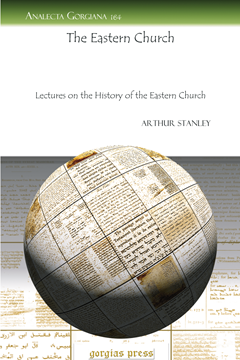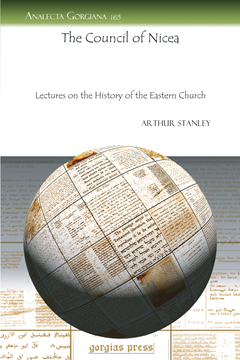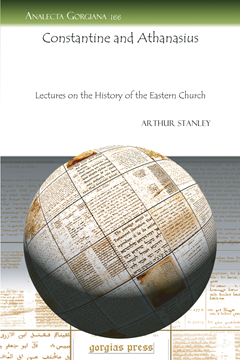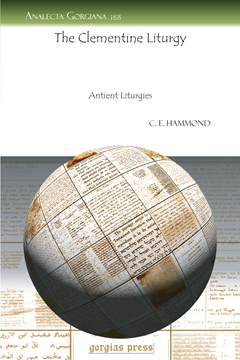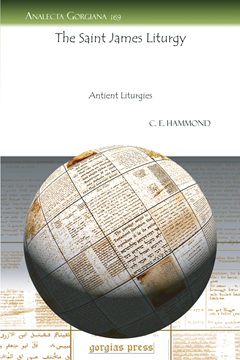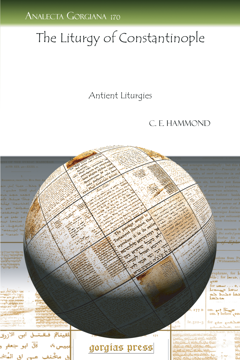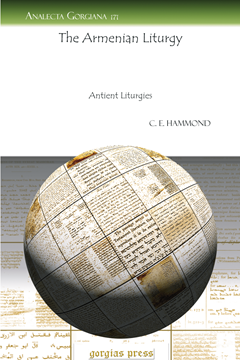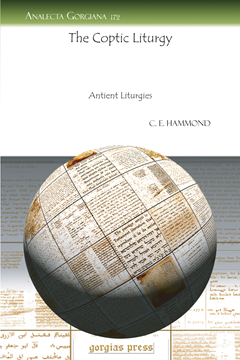The Eastern Church
Lectures on the History of the Eastern Church
Series: Analecta Gorgiana 164
ISBN: 978-1-60724-179-9
Extracted from Arthur Penrhyn Stanley’s Lectures on the History of the Eastern Church, this initial essay lays out his general perceptions of the Eastern Church. He considers the divisions of the church, the historical epochs into which it falls, and the general characteristics and the advantage of studying them.
$41.00 (USD) $24.60 (USD)
The Council of Nicea
Lectures on the History of the Eastern Church
Series: Analecta Gorgiana 165
ISBN: 978-1-60724-180-5
Extracted from Arthur Penrhyn Stanley’s Lectures on the History of the Eastern Church, this set of lectures focuses on the Council of Nicea. Divided into four separate lectures, it begins with a detailed general overview, the contents and participants of the council, a consideration of its opening and the final results of its closing.
$54.00 (USD) $32.40 (USD)
Constantine and Athanasius
Lectures on the History of the Eastern Church
Series: Analecta Gorgiana 166
ISBN: 978-1-60724-181-2
Extracted from Arthur Penrhyn Stanley’s Lectures on the History of the Eastern Church, this set of lectures examines two of the most famous participants of the Council of Nicea, the Emperor Constantine and Saint Athanasius. Together these two figures largely define the Council of Nicea, and their portraits are vividly portrayed here by an eminent church historian.
$44.00 (USD) $26.40 (USD)
The Russian Church
Lectures on the History of the Eastern Church
Series: Analecta Gorgiana 167
ISBN: 978-1-60724-182-9
Extracted from Arthur Penrhyn Stanley’s Lectures on the History of the Eastern Church, this set of lectures covers the Russian Church. Stanley begins with the conversion of Russia and moves through the Middle Ages and concentrates on Patriarch Nicon and the reformations in the church under Peter the Great.
$56.00 (USD) $33.60 (USD)
I Deal Death and Give Life
Biblical Perspectives on Death
By Shaul Bar
ISBN: 978-1-60724-328-1
Is death the end of the human journey, or is there continuity after death? What happens to body and soul after death? Were Israelites worshiping the dead? What is the source of mourning practices? This book explores this multifaceted topic as related in the Bible.
$166.00 (USD) $99.60 (USD)
The Clementine Liturgy
Antient Liturgies
Series: Analecta Gorgiana 168
ISBN: 978-1-60724-183-6
C. E. Hammond's Antient Liturgies provided a valuable resource at an early stage in comparative liturgical studies. Free of extensive critical apparatus, Antient Liturgies presents a collection of historic forms of worship from the Western, Eastern, and Oriental Churches. This extract from the book focuses on the Clementine Liturgy, an important early liturgy, apparently known even to Justin Martyr. Rendered in Greek and with an analytical introduction this early study continues to provide a broad overview of early Christian worship made available in an accessible and convenient format for students and scholars.
$37.00 (USD) $22.20 (USD)
The Saint James Liturgy
Antient Liturgies
Series: Analecta Gorgiana 169
ISBN: 978-1-60724-184-3
C. E. Hammond's Antient Liturgies provided a valuable resource at an early stage in comparative liturgical studies. Free of extensive critical apparatus, Antient Liturgies presents a collection of historic forms of worship from the Western, Eastern, and Oriental Churches. This extract from the book focuses on the St. James Liturgy, both the Greek and Syriac renditions. Representing the liturgy of the Patriarchate of Antioch, this liturgy is rendered in Greek and Latin. As an analytical introduction this early study continues to provide a broad overview of early Christian worship made available in an accessible and convenient format for students and scholars.
$45.00 (USD) $27.00 (USD)
The Liturgy of Constantinople
Antient Liturgies
Series: Analecta Gorgiana 170
ISBN: 978-1-60724-185-0
C. E. Hammond's Antient Liturgies provided a valuable resource at an early stage in comparative liturgical studies. Free of extensive critical apparatus, Antient Liturgies presents a collection of historic forms of worship from the Western, Eastern, and Oriental Churches. This extract from the book focuses on the Liturgy of Constantinople. As Hammond explains, this liturgy contains elements of the St. Basil, St. Chrysostom, and Presanctified liturgies presented in Greek. As an analytical introduction this early study continues to provide a broad overview of early Christian worship made available in an accessible and convenient format for students and scholars.
$43.00 (USD) $25.80 (USD)
The Armenian Liturgy
Antient Liturgies
Series: Analecta Gorgiana 171
ISBN: 978-1-60724-186-7
C. E. Hammond's Antient Liturgies provided a valuable resource at an early stage in comparative liturgical studies. Free of extensive critical apparatus, Antient Liturgies presents a collection of historic forms of worship from the Western, Eastern, and Oriental Churches. This extract from the book focuses on the Armenian liturgy. With a beginning in the early fourth century, in connection with the Exarchate of Caesarea, this liturgy is presented in English. As an analytical introduction this early study continues to provide a broad overview of early Christian worship made available in an accessible and convenient format for students and scholars.
$41.00 (USD) $24.60 (USD)
The Coptic Liturgy
Antient Liturgies
Series: Analecta Gorgiana 172
ISBN: 978-1-60724-187-4
C. E. Hammond's Antient Liturgies provided a valuable resource at an early stage in comparative liturgical studies. Free of extensive critical apparatus, Antient Liturgies presents a collection of historic forms of worship from the Western, Eastern, and Oriental Churches. This extract from the book focuses on the Coptic liturgy. The origin of the liturgy goes back to the St. Cyril and St. Basil liturgies. Here the liturgy is presented in Latin. As an analytical introduction this early study continues to provide a broad overview of early Christian worship made available in an accessible and convenient format for students and scholars.
$41.00 (USD) $24.60 (USD)
